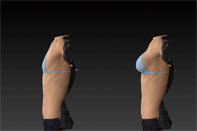Are injectables literally getting out of hand?
A recent news article in the ThisIsInsider online magazine stated that some people are now getting an acidic gel injected into their hands for cosmetic purposes. This procedure is becoming popular with people over the age of 40 who have sunspots, wrinkles, and protruding veins.
As we get older, the skin on our hands can be a clear indicator of how old we are. More and more people realize this and Restylane Lyft has created a product that is FDA-approved to restore fullness to the back of the hands.
Emerging New Injectable Trends
Our insatiable appetite to find the fountain of youth has led us to the point where injectables are now being used for all sorts of unorthodox cosmetic procedures. Just a decade or so ago, the only injectable around was Botox, and that was used to remove lines and wrinkles from the facial area.
Some of the more unique trends in injectables are:
Under-Eye Bags – Women in South Korea find bags under the eyes to be very fashionable. Their doctors will inject the under-eye area with a filler to create a baggy, puffy look.
G-spot Fillers – Some doctors in America are injecting fillers under the G-spot area to elevate it physically. This provides a heightened sexual experience and sensation for women who undergo this procedure.
Botox in Shoulders – Another strange trend out of Korea is when women get Botox injections into their shoulder area. It is supposed to help break up the appearance of shoulders that have a bulky look to them.
A Botox injection can help reduce the size and appearance of the trapezius muscles (aka “traps”). The result is the appearance of a much longer and slimmer neck and shoulders.
Traditional Injectables
Traditionally, injectables like Botox and other fillers have been used to lessen the appearance of lines and wrinkles on the face. Our faces are the first thing other people see and are a clear indicator as to how old we are.
The most common areas for Botox to be injected are the forehead, sides of the eyes, and corners of the mouth. This is where the most noticeable signs of aging occur.
Botox usually only lasts four to six months before another round of injections is required. Some doctors have begun experimenting with a “cocktail” of Botox and injectables that can last upwards of one year. A typical injectable cocktail might include Botox to relax the frown lines, Radiesse to fill in the wrinkles, and Sculptra to fill in the cheeks.
Why are People Getting Hand Injections?
Botox and fillers have worked so well over the years that people are now looking at fixing other parts of their body that can indicate how old they are. The hands are one of those areas.
Whenever we go outside, our hands are usually exposed to the sun. Once we hit 40 years old, sun spots, wrinkles, and veins start to show up. A face that has Botox and fillers may make a person look ten years younger, but their hands are usually a dead giveaway of how old they are.
Our hands also lose volume as we grow older. The fat will disappear, and the shape of the hand will start to look bony and gaunt. Cosmetic surgeons initially focused on transferring and injecting fat into the hands, but it didn’t last long. It wasn’t until the FDA approved Restylane Lyft did hand injections start becoming more popular.
What other Injectables Are Being Used?
While Restylane Lyft is the only product that is specifically FDA approved for injecting into hands, some plastic surgeons are using such fillers as Radiesse and Voluma to help plump up the hands in a procedure known as “off-label.”
Off-Label usage of injectables means that they were not intended for what they are being used for. Generally speaking, it’s thought that off-label use is relatively safe. It’s best to do your research and ask around for a 2nd opinion before getting an off-label procedure performed.
Voluma is made out of a high-density hyaluronic gel that can “stay put” for long periods of time. Radiesse is a calcium-based filler that is impossible to tell the difference from natural tissue once injected into the body.
Non-Injectable Procedures for Hands
Some people are opting for a combination of injectables and other cosmetic procedures. Lasers and chemical peels are also gaining in popularity. Over the years, chemical peels have become much milder and safer than they were 20 years ago.
Do Hand Injectables Really Work?
Hand injectables do work, but if you wish to maintain appearances, you will need to get maintenance injections performed at regular intervals. Injectables are not meant to be permanent.
If you’re looking for more permanent results, plastic surgery is the only way to go. At some point, the cost of getting the injections will equal out to the cost of performing a plastic surgery procedure.















